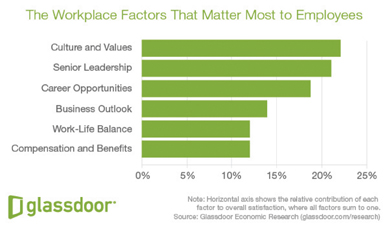Management by Coaching
By Kimberly Paterson, CEC
WINNING THE RACE FOR TALENT—PART ONE
What you need to do now to attract and keep quality people
If you’ve been trying to hire over the past six months, you likely know how fierce the battle for talent is. Experienced insurance professionals are aging or opting out of their jobs in record numbers. According to The Jacobson Group, specialists in insurance recruiting and executive search, the industry will need to fill nearly 400,000 jobs over the next couple of years, and there aren’t enough candidates to assume these positions. To compound the problem, the United States is currently enjoying the lowest unemployment rate in almost 50 years.
Employees have the upper hand
With more opportunities to choose from and high expectations about work, employees with solid, marketable skills are scrutinizing potential employers more carefully than ever. What drives employees’ decisions about the right employer may surprise you. A recent Korn Ferry study of 1,100 talent acquisition professionals indicated that, unlike five years ago, compensation (i.e., salary and benefits) is no longer the top reason why candidates choose one employer over another. Today a company’s culture is the number one factor. A look at input from 615,000 Glassdoor users showed similar results. Job flexibility is expected to rival that in the next five years.
With more opportunities to choose from and high expectations about work, employees with solid, marketable skills are scrutinizing potential employers more carefully than ever.
No one is saying that pay isn’t important. It may help get new talent in the door, but research shows that the overall impact is small and that an employer is not likely to keep good people without making a commitment to a positive culture and values, investing in improving the quality of senior management, and creating career pathways within the organization.
More than ever, employers need to know and act on the factors that make their company appealing to candidates. They have to make it easy for prospects to choose them over their competition.
In the first part of this column we’ll focus on attracting candidates. Then, we’ll explore factors that positively affect employee satisfaction, commitment, and retention.
Know and show what you stand for
Culture and values matter. Much current research points to culture and values as the number one factor in choosing a place to work and also the most significant predictor of employee satisfaction. Whether by default or by choice, every business has a culture. It is the collective beliefs, values, attitudes, and implicit rules within an organization that shape actions minute by minute, day by day. Put simply, it’s “the way we do things around here.” Culture is the glue that binds an organization together.
 Potential hires, whether consciously or unconsciously, are looking for every clue they can find to understand your culture. They want to know how it works in the real world, not what it might say on a wall poster or your website. When entire organizations—not just leaders but all employees—are clear about the culture and values and share compelling stories about what these look like in practice, it’s easy for employers and potential employees to see if the fit is right. If you haven’t spent time articulating the core elements of your culture and your core values, it is an exercise worth doing. Netflix Culture: Freedom & Responsibility provides an inspiring example of messaging culture and values. If you’d like a copy of the document, email me at kpaterson@cim-co.com.
Potential hires, whether consciously or unconsciously, are looking for every clue they can find to understand your culture. They want to know how it works in the real world, not what it might say on a wall poster or your website. When entire organizations—not just leaders but all employees—are clear about the culture and values and share compelling stories about what these look like in practice, it’s easy for employers and potential employees to see if the fit is right. If you haven’t spent time articulating the core elements of your culture and your core values, it is an exercise worth doing. Netflix Culture: Freedom & Responsibility provides an inspiring example of messaging culture and values. If you’d like a copy of the document, email me at kpaterson@cim-co.com.
Define your ideal candidate persona
Personas have their roots in marketing. Personas clearly define your target customers and how they think and make buying decisions. We’re adapting this proven customer acquisition tool to talent acquisition.
An ideal candidate persona is the representation of your perfect hire. It describes in detail the skills and traits required for the job, an understandingof what’s typically important to these candidates, and, most important, themindset and values needed to fit within your culture. Crafting candidate personas takes time and energy, but when you use them to develop hiring criteria, screen and interview prospective employees, and apply them as data points in the final selection process, you significantly improve your results.
Just as you are defining the criteria for your ideal candidate persona, quality job candidates want a perspective on what it’s like to work for you before subjecting themselves to the application and interview process. They use whatever means they can to ascertainwhether your company is a good potential fit for their talents and goals. If they’ve never done business with you or don’t know someone who’s worked for your organization, your website and social media will be primary sources of information. Do your pages and website position you as a vital forward-thinking business or a company caught in a time warp? Does your website feature a career section that communicates what it’s like to work at your company, the positions available, and how to apply?
The best talent applies when they like what they see. In a good job market, candidates don’t waste their time applying to companies that aren’t transparent and don’t make an effort to share information with them. The more relevant content you provide online, the easier it is for candidates to get excited about the idea of working for you.
Employer value proposition
Think of your employer value proposition (EVP) as the answer to the question: “Why should I work for your company instead of somewhere else?” Your EVP encompasses everything that employees receive in return for the time and effort they invest in your organization. An effective EVP strikes a delicate balance between tangible and intangible rewards and addresses these five areas:
- Compensation—Salary and additional rewards such as bonuses and promotions.
- Benefits—Paid time off (holidays, vacation, and sick days), insurance, 401(k), profit sharing, and tuition reimbursement.
- Career—Elements that affect career stability and enhance employees’ development and progress, such as opportunities for training and education, professional consultations, evaluation, and feedback.
- Work environment—Factors that create a positive work environment, such as a clear understanding of roles and responsibilities; a sense of autonomy; recognition for performance; a comfortable, well-designed work space; flexible work hours; work-from-home opportunities; and respect for work-life balance.
- Company culture—A summaryof the organization’s culture and values.
It helps to do some research before finalizing your EVP. An excellent place to start is with your current employees. Concentrate on feedback from those who are successful in your organization. Review what you’re offering now. What do your employees appreciate most, why did they choose the company, and what else could you be doing to motivate them to do their best work every day? Also go back and review your ideal candidate persona. What are the salary range and benefits that would attract this candidate? What kind of career development opportunities would this candidate value? What is a great company culture for this candidate? What kind of work environment would challenge and appeal to this candidate?
Create a compelling experience
Talent chooses you. One way you can positively differentiate your company is through the application process. Test how friction-free your procedure is by having someone go through it as a candidate would and then give you detailed feedback on the experience. You may want to have them do the same exercise with several of your competitors. Here are some questions to consider in your audit:
- Are job openings posted and easy to find on your website?
- Is an online application available? If so, is it easy to complete? Industry-leading companies like Apple, Netflix, and Salesforce make sure their applications take 15 minutes or less to complete. If you find yourself going beyond that, you may be losing applicants.
- Are applications responded to promptly with an indication of what happens next and when?
- Do you offer interview times beyond normal business hours so candidates don’t need to miss work?
- When people visit the office, do you welcome them as you would a preferred client?
- Do the lobby and the walk to the interview area present your office environment in a positive light that’s consistent with your culture and values?
- Does the interview begin on time, and is the interviewer prepared and familiar with the candidate’s resume?
- Does the interviewer provide specifics on what will happen next and when?
- If the candidate progresses to a second interview, does he or she have a chance to talk with current employees?
- Does the overall application experience communicate a positive impression of your company?
Your employer brand
Your employer brand is the perception that current and prospective employees have of your business as a place to work. Every company has one whether or not it chooses to.
Businesses that aren’t proactive about shaping their employer brands may be losing out.
Companies with positive brands get twice as many applications as companies with negative brands. Those with poor reputations as employers can pay an average of 10% more per hire.
Everything you do, from the career page on your website, social media sites, listings on job search platforms to your application process and employer value proposition, works to build your employer brand. But nothing plays a more critical role than your employees. People are far more likely to trust a company based on what its employees have to say than on what’s on its recruitment advertising. That means that talent attraction relies heavily on employee engagement and advocacy. Give your employees guidance on how to share what it’s like to work for you on social media and within their networks. Encourage them to tell their stories.
If your business is to continue to thrive, attracting quality employees needs to be as high a priority as attracting clients—for organizations with hard-to-hire roles like sales and in talent-tapped geographic locations. It’s essential to know what employees want from work and to create and promote a compelling employer value proposition. If you’re looking to recruit recent college graduates, an engaging culture is critical. Insurance lacks the appeal of more glamorous, prestigious, or public service-oriented professions. To people who have yet to experience the challenges and career opportunities the industry can offer, a winning culture can be a powerful persuader in recruiting. n
The author
Kimberly Paterson, Certified Executive Coach and Master Energy Leadership Coach, is President of CIM (www.cim-co.com). CIM works with organizations and individuals to maximize performance through positive lasting behavioral change. Her clients are property & casualty insurance companies, agencies, and brokers. She can be reached at kpaterson@cim-co.com.
Follow Kimberly on www.linkedin.com/in/kimberly-paterson and twitter.com/CIMChangeMinds.






